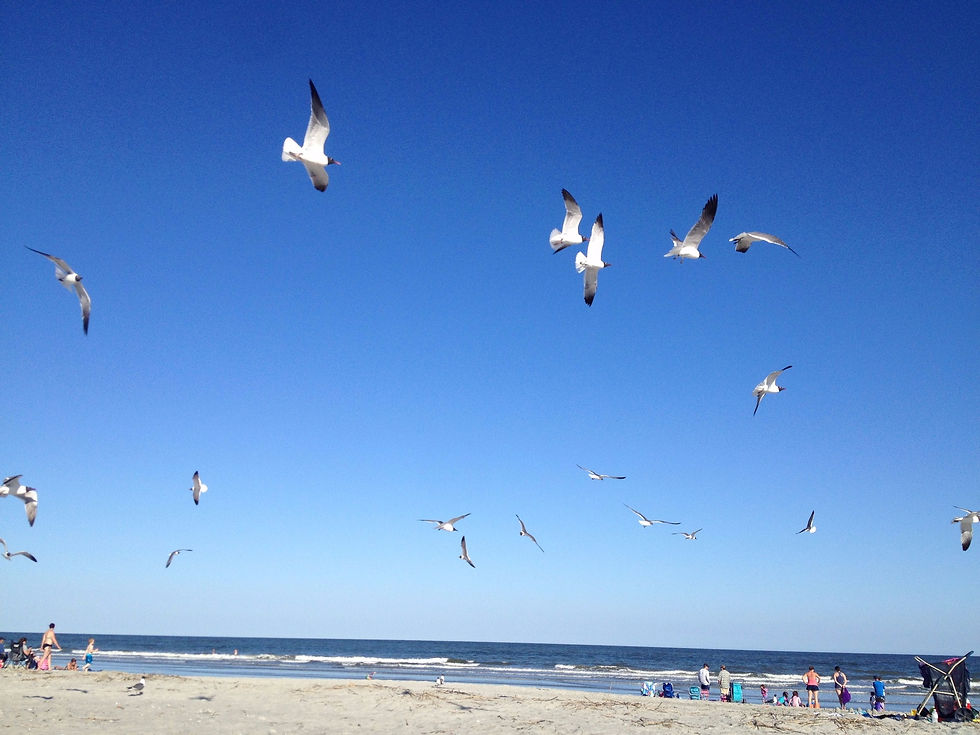The Magic of Marjorie Kinnan Rawlings’ Cross Creek
- Amber Veverka
- Aug 31, 2017
- 3 min read
It is risky to visit the land of one’s literature.
Thoreau’s Walden Pond, hemmed by suburbia. Laura Ingalls Wilder’s sweet-scented tallgrass prairie, lost to the plow. E.M. Forster’s Florence, where you dodge high-speed scooters to get to your room with a view.
But at Cross Creek, Florida, readers of Marjorie Kinnan Rawlings will know no such dismay.

It’s all there in her farmhouse: the weathered, handmade table where she wrote the Pulitzer prize-winning novel, The Yearling. The kitchen, where she simmered jellies from tiny, tart mayhaw berries and told us how to do the same in Cross Creek Cookery.

The farm’s first bathroom, built with cash hard-won by writing, and, as she related in her memoir, Cross Creek, celebrated with a party – complete with iced liquor in the tub and roses in the commode.

Operated as a state historic park, her home and land have been carefully preserved as they were in the 1930s.
As a result, the rambling farmhouse looks as if Rawlings has just stepped out for a weekend hunt deep in the Florida scrub, or to visit the nearby spring that was her inspiration for the opening scene of The Yearling.
A dining table is set with china for a Florida feast. Visitors can peek into the built-in cabinet next to the fireplace, which she retrofitted to house liquor on top and kindling below (“firewater and firewood” as she put it). They can rest on the side porch, where she snapped beans, cleaned her shotgun and observed the goings-on in the yard. They can admire the smooth grain of the handmade bed in the guest room where writers such as Robert Frost and Margaret Mitchell slept during visits.
And she might have watched scenes like those on a recent visit, when brilliantly feathered roosters strutted under shrubs and ducks murmured their way across the sand. The yard today fades seamlessly into a patch of citrus trees, some of which have grown from the original rootstock of Rawlings’ grove.
For visitors whose grocery produce section offers only navel oranges augmented by the occasional blood orange, the list of citrus Rawlings once grew sounds exotic. In addition to kumquats, lemons and tangerines, she raised trifoliata oranges, Parson Brown oranges and calamondins.

The trees growing today still offer up their waxy white flowers, heady with perfume, along with fruit for the tasting. In Rawlings’ time, the grove was a necessary hedge against Depression-era poverty; cash money between sales of stories.
Across the road from the farmhouse, another grove, now reverting to hammock, offers a glimpse into the jungle that must have existed before the land was put to cultivation. Today you walk a twisting path through sun-flecked glades, hearing the occasional thump as a breeze drops an orange into the underbrush.
Overlaying a visit to the house are not only Rawlings’ writings, but the writings of people who visited her – and sometimes the books those visitors reference, producing a strange telescoping through time. One such moment is described by famed naturalist-writer Edwin Way Teale, who with his wife stopped by
during the research for his book, North with the Spring.
“Mrs. Rawlings had been working late the night before and pages of interlined manuscript … were strewn about a low table near the fireplace one end of the living room,” Teale writes. “Open bookcases extended along the wall under an original Audubon print. A few weeks before, Mrs. Rawlings had discovered that termites were tunneling through two of her most prized volumes, Peter Scott’s Dawn Chorus and a rare first edition of William Bartram’s Travels. During his wanderings on the Florida peninsula before the American Revolution, Bartram had crossed Orange Lake and forded the River Styx only a mile or two from the spot where, more than one and a half centuries later, we examined the termite-riddled copy of his book.”
The layers of time Cross Creek preserves include those both complicated and painful. Readers today flinch at Rawlings’ words about her black neighbors and workers. She respected and liked many of them. But she also patronized and ridiculed them. Her portraits of black resident and poor white alike may be a product of her times, but that doesn’t make them easier to read today.
Cross Creek gives Rawlings’ readers a chance to slip into those and other, more beautiful pages, and see the place where they were birthed. That the farmstead has been saved is perhaps testament to Rawlings’ own beliefs about land – and what we ultimately owe to it.
“Who owns Cross Creek?” she asked in her memoir. “It seems to me that the earth may be borrowed but not bought. It may be used, but not owned. It gives itself in response to love and tending, offers its seasonal flowering and fruiting. But we are tenants and not possessors, lovers and not masters. Cross Creek belongs to the wind and the rain, to the sun and the seasons, to the cosmic secrecy of seed, and beyond all, to time.”

Comments